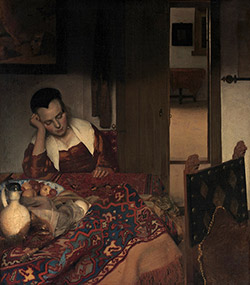
First performed in November 2019 at the Huddersfield Contemporary Music Festival and then at the Splitter Orchester festival in Berlin, this studio recording of Magnus Granberg's delicately complex and exquisitely dream-like composition features his Skogen ensemble, including Granberg, Rhodri Davies, Toshimaru Nakamura, Erik Carlsson, Petter Wastberg, &c.
In Stock
Quantity in Basket: None
Log In to use our Wish List
Shipping Weight: 3.00 units
EU & UK Customers:
Discogs.com can handle your VAT payments
So please order through Discogs
Sample The Album:
Magnus Granberg-composition, prepared piano
Skogen-ensemble
Anna Lindal-violin
Rhodri Davies-harp
Toshimaru Nakamura-no input mixing board
Petter Wastberg-electronics
Ko Ishikawa-sho
Leo Svensson Sander-cello
Simon Allen-vibraphone, amplified strings
Henrik Olsson-objects
Erik Carlsson-percussion
Click an artist name above to see in-stock items for that artist.
Label: Another Timbre
Catalog ID: at156
Squidco Product Code: 29311
Format: CD
Condition: New
Released: 2020
Country: UK
Packaging: Cardboard Gatefold
Recorded at Atlantis, in Stockholm, Sweden, on November 19th, 2019.
Jesse Goin interviews Magnus Granberg:
JG: It's striking to me how present and vital the organic (and sentient) is in your musical world -both in the descriptive language around your process of composition and , to my ears, in the sounds themselves; e.g., Skogen means forest, bombax is a species of tree, you refer to the fragments of source material you integrate into your pieces as 'pools', you describe the framing of a piece as 'environments', etc.
Then there are the sounds themselves- of course it's much more difficult to convey the organicity one hears in these environments, of their atmosphere- but it's there nonetheless- so much so that I have come to regard your compositions as diaristic, field recordings, multiple views of familiar landscapes-but more on that later... Some of the specific qualities in the pooled sounds-their instability, fragility, transience- suggests an organicity and sentience in their net effect, whatever the compositional strategies you employ - and some of the sounds are sentient in a mimetic way-I hear forest creatures!
MG: Yes, I think that's a very good observation and a pertinent remark. When I first was in the process of envisioning the music in the early 2000s (after going through a very thorough crisis where I more or less stopped playing the saxophone and more or less quit playing jazz and free jazz) I realized that I had this desire for the music to be more of an environment, a place or a terrain rather than primarily being an object, an architecture or a means of individual or collective expression. I also felt something of a frustration with what I perceived as a dichotomy and separation of compositional and improvisational practices, and that there should be so many possible gradations of the spectrum between freedom and fixation that perhaps weren't being explored. So gradually I started to envision a musical environment in which the musicians were allowed and encouraged to move freely in accordance with their own judgment and individual dispositions while at the same time being governed by the same overarching principles or perhaps rather just simply being part of the same creation or environment, a creation or environment which was in more or less constant flux, change or transformation while at the same time always being the same. To provide a potential which could be realized in more or less an innumerable number of ways while still being coherent and retaining a clear identity.
JG: Yes, and as a happy accident you were moving through that process of exploring new intersections of freedom and fixation precisely when Simon Reynell (Another Timbre label head) found his personal interests and tastes shifting to a similarly imagined territory; your inaugural release on Another Timbre, Ist Gefallen.. was published in 2012- Reynell has said in a couple of interviews that that was the year he began to commit more of his focus for the Another Timbre catalogue to the open score possibilities. not to place too fine a point on this but how fortunate is the timing and confluence between the pools you were entering into as a composer and Reynell's curatorial interests as one of a very few publishers of experimental music?
MG: Yes, crossing paths with Simon at that time definitely was of great importance to me. His initial response to (and continuing interest) in my music was (and still is) very encouraging and initially came at quite a crucial point in my musical life. For a number of years, during the period when I first started experimenting and developing my music after more or less having quit playing jazz and free improvised music, I had had this feeling of increasingly becoming more and more isolated and that my new work seemed to fall in between categories, that there didn't seem to be too many obvious or existing contexts, platforms or communities for the music that I had in mind. So on the one hand starting Skogen and reaching out to and inviting sympathetic musicians like Angharad and Toshi that already were part of an international community of experimental musicians, and on the other hand establishing contact with Simon both proved very valuable in breaking this feeling of isolation that I had. And in a larger perspective I think Simon's work with Another Timbre has been very important in making these different kinds of music more visible and in creating a sense of community and belonging to listeners and practitioners alike. And in initiating and encouraging new projects he has been an invaluable catalytic force as well, of course.
And as regards the idea or perspective of sentience in the context of music I have often felt and thought that sound and musical materials are very delicate matters that one must be very careful with. There is of course this indeed very well-known quote of Feldman's where he, when asked by Stockhausen what his secret is, answers that he doesn't push sounds around. And for me that very much goes for people as well, neither do I like to push people around nor do I myself like to be pushed around. So I guess my music perhaps to at least some extent may be considered as some sort of response to the delicacy of sound and music as well as people.
JG: As I have been listening to your music I have been revisiting the journal writings of the Swiss poet and photographer Gustave Roud, specifically Air of Solitude - bear with me in providing some context for this linkage- in 2014 Jurg Frey was our house guest for a week during the preparations and rehearsals for the Wandelweiser festival I presented in St. Paul; one night he talked enthusiastically about his regard for the writings of Roud, elaborating a little on the poet's creative process and how that process resonated for Jurg as a composer. This sent me searching for Roud's journals and poetry available in English translation- about which there is relatively little-much less commentary in English- the salient aspects about Roud that I find in listening to your work of the past decade: Roud lived in one place, a family farm in Carrouge, from 11 years old to his death at age 79. He developed a regular practice of walking through the countryside with a journal, noting any and all variations in the landscapes-fluctuations in weather, the attendant seasonal changes, the fluctuations in his moods, perspective, et al. After many years of this practice, Roud wrote that at times these intimately familiar landscapes appeared as "elsewhere", utterly changed by his close observation of them. In a journal entry about his melding with these landscapes he wrote, "...it enslaves us gently, in the manner of a symphony." For decades Roud would lift passages from earlier journals and poems and enfold them into newer texts; this process creates, to my way of reading, work of both constant flux and a clear identity.
So it is with your compositions of the past decade: I set myself to listening through your eight releases in the eight years you've been published by AT, attuned to this idea of your folding and enfolding cells, fragments and canons in a lineage of pieces- clearly there are memories and materials that establish your "clear identity", a "clearly articulated environment", as you referred to it in an interview with Reynell. This genetic material has specific characteristics- threads of melancholia, dissolution, the claims of memory, pools of intervallic relationships with headwaters as divergent as Dowland and the American songbook. It seems as if, to some extent, you revisit and reframe familiar materials, which become elements of a new environment created by each newly rejoined or reconfigured ensemble. Maybe the familiar pools of melody and intervals are made "elsewhere" by the inclusion of improvisers like Toshi Nakamura.
Henri-Frederic Amiel, a contemporary of Roud, said "Every landscape is a state of the spirit." This all plays into why I told you I hear your compositions as a new sort of field recording.
MG: Yes, I haven't read Roud myself but Jürg has told me a little bit about his life and work and from your description of Roud's methods it sounds as if there might be some similarities, perhaps not as closely related or analogous to Roud's procedures as Jürg's own compositional practice as I have understood it but still related somehow. Even if I don't keep (and use) a journal or a sketchbook in the same way as Roud did or Jürg does, I guess there definitely still are these specific, recurring topics and patterns in my music that you so perceptively point out. Perhaps one could say that the individual pieces are different outcomes of more or less the same (or slowly evolving) gene pool, the same way that different takes of the same piece are outcomes of more or less the same conditions. And I guess that's very much how what we call style generally works, both in terms of individual style as well as in the sense of broader musical historical trends or perspectives: once certain conditions are established individual traits tend to even out a bit, at least when seen from a certain distance. But I think it's important to, if not to (re)invent the wheel, so at least to try to cultivate and treasure the sensibility and ability of experiencing something unknown arising from the seemingly well known. To me these are among the most joyful and thrilling musical experiences one could have, and the collective intelligence and sensibility of the musicians are indeed one of the most important prerequisites to actually make them happen.
JG: To date-May 2020- you've released eight ensemble pieces on AT, with five different group configurations -the core unit of Skogen is expanded and elevated by various guest musicians from the realms of baroque music, noise and improvisation. Your intuitive aim- "something unknown arising from the seemingly known"- is realized within a collective of musical relationships extending back 15 years, as well as many completely new encounters.
This sort of experiment- layering and enfolding known and unknown musicians from disparate musical practices into scores with fixed and fragile, notated and malleable elements- has seldom been attempted in quite this manner. The risks are daunting- the risks of pastiche, of a diminution of the respective strengths of players confronting new intersections of style and substance- I think we're in accord on the idea that it is these very risks of failure that create something new, music against reproduction, as Phillip Larkin observed, "like something almost being said."
In past interviews you've always cited the gifts and sensibilities of the ensemble members in realizing your pieces-I want to ask you to expand a little more on the collective experience, one you refer to as contingent, fragile and resting entirely on trust. How, from your perspective, does the ensemble work?
MG: Well, when it comes to how the ensembles work and what makes the music work, I must say it's always something somewhat mysterious about how things (sometimes quite suddenly) fall into place, particularly when working with new ensembles. That's something which very much escapes or transcends notation (at least in my particular case) and which very much is the result of just playing together, of getting acquainted with the materials and the specific dynamics of the actual ensemble, of cultivating a common practice where everyone gets familiar with the materials and find their own individual and particular ways of navigating them while at the same time getting attuned to the musical environment in its totality. And yes, I guess there is always a risk of failure and an element of danger to this almost ritualistic process of almost trying to conjure up or invoke the music. At the same time I must say that I feel quite confident in how it works: how the nature of the materials and the intelligence and the sensibility of the performers provide a rather dependable potential for the music to arise from.
JG: et Pass My Weary Guiltless Ghost extends the lineage of your scored environments; for the third time you've assembled a tentet for a recording. The collective sound is without clutter, with long passages of pointillism, whispers, undergrowth rustling, at once low-volume and highly dynamic. I am pleased you acknowledged the "somewhat mysterious" element of your composition. To single out just a few facets of the collective sound, I have to say how aware I am on this one of the brilliant colors of Ko Ishikawa's sho and the subversive play of Toshi Nakamura. I'm not using subversive as a pejorative- Nakamura frequently adds sand and grit to an environment that is otherwise as lucid and brilliant as a mirror. Also, I hear the spirit of gamelan threading through your prior works and this one-this is seldom remarked on in the reviews I've seen.Of course the ensemble in toto sounds fantastic; to your ears, are there aspects of Let My Weary Ghost... that are distinctive from you earlier releases on Another Timbre?
MG: Well, as you also pointed out I guess I also consider the new recording very much an outgrowth or continuation of our previous work. And I was of course very happy to be able to include Toshi, Ko, Angharad, Rhodri and Simon in the ensemble this time, they are all wonderful musicians and contribute greatly to the music in the ways that you describe.It's also interesting that you notice something of a gamelan influence in my work. Even though I have never tried to use or relate to particular techniques or forms associated with Gamelan I have for many years had a very strong affection to Javanese Gamelan music in particular and have listened to it quite extensively on and off for a couple of decades or so. For a long time I have also had a fondness for Gagaku, another wonderful orchestral tradition which has inspired me greatly, even if I don't have too much technical knowledge about it. But even if my knowledge about these traditions is very limited, I do think they have been very influential to me anyhow, along with many other forms of music from different ages and geographical areas. I guess that my own work in certain respects perhaps may be considered something of an attempt to synthesise all these different experiences and affections that have become part of you, to try to resolve or integrate sometimes seemingly opposing tendencies into a coherent form, into some sort of oneness.
JG: It's been a pleasure to talk a little about your work after listening to it for a number of years; I want to leave off for now with a remark you made in your guest lecture at the New England Conservatory of Music last year-it seems apposite to these strange times; you said, "No grand theories on my part...(but) a simple desire to get to know this music a little bit better, of perhaps making oneself a little bit more at home in the world."
MG: And thanks for taking your time listening to the music and coming up with such interesting perspectives, it's really been a pleasure on my part as well. Hope to see and hear from you soon again!

The Squid's Ear!
Artist Biographies
• Show Bio for Magnus Granberg "Magnus Granberg is a composer and performer working at an intersection between contemporary chamber music and improvisation. He is based in Stockholm, Sweden. Born in Umeå in 1974, he studied saxophone and improvisation at the University of Gothenburg and in New York in his late teens and early twenties. Self-taught as a composer, he formed his own ensemble Skogen in 2005 trying to integrate experiences, methods and materials from various traditions of improvised and composed musics into a new modus operandi. Now mainly working with the ensemble Skogen and the newly formed Skuggorna och ljuset, while also writing music on commission for different ensembles and projects. He is also active as an improvisor in different contexts, mainly playing the clarinet. His music has been performed in Norway, Sweden, Switzerland, the United States, England, Austria, Hungary and Slovenia, broadcast by public radio channels in England (BBC Radio 3 and 6), Germany (SWR 2), Sweden (SR P2), Estonia, Slovenia, Serbia, Hungary and the United States, and has been published by the British record label Another Timbre. Recent work includes a commission from Another Timbre and Ensemble Grizzana and collaborations with musicians such as David Sylvian, Christoph Schiller and the Swiss duo Diatribes. He has in the last decade also, more or less regularly, collaborated with musicians such as Angharad Davies, Tisha Mukarji, Tetuzi Akiyama, Toshimaru Nakamura, Anna Lindal, Kristine Scholz, Rhodri Davies, Simon Allen, Christoph Schiller and Ko Ishikawa." ^ Hide Bio for Magnus Granberg • Show Bio for Anna Lindal "Anna Lindal, violin, studied in Sweden and Switzerland. Lived and performed in Switzerland and France for many years, played in the string trio Trio des Lyres specialized in mixed programs with barock and classical music on original instruments as well as contemporary works. During this time the film "Livsstråk" was made which is a musical portrait of Anna Lindal. From 1983 to 2001 concertmaster of the Royal Philharmonic Orchestra in Stockholm and from 2002 Professor of violin at the Royal college of Music in Stockholm. Currently Professor in Music att Stockholm University of the Arts and free lance violinist. Engaged in artistic research on interpretation/improvisation and tradition/convention versus contemporary expressions. Performs regularly as soloist, as chamber musician, in experimental theatre and in different groups for free improvisation. Collaborates with a large number of contemporary composers and has had many new compositions dedicated to her. Made several recordings, among others two solo records with works by John Cage and Christian Wolff together with related composers. Has also been performing instrumental Argentine Tango in the quintet Tango Libre for several years." ^ Hide Bio for Anna Lindal • Show Bio for Rhodri Davies "Rhodri Davies was born in 1971 in Aberystwyth, Wales and now lives in Gateshead in the northeast of England. He plays harp, electric harp, live-electronics and builds wind, water, ice and fire harp installations. He has released four solo albums: Trem, Over Shadows, Wound Response and An Air Swept Clean of All Distance. His regular groups include: a duo with John Butcher, Common Objects, HEN OGLEDD: Dawson - Davies, a trio with David Toop and Lee Patterson, Cranc, The Sealed Knot and a trio with John Tilbury and Michael Duch. In 2008 he collaborated with the visual artist Gustav Metzger on 'Self-cancellation', a large-scale audio-visual collaboration in London and Glasgow. New pieces for solo harp have been composed for him by: Eliane Radigue, Phill Niblock, Christian Wolff, Ben Patterson, Alison Knowles, Mieko Shiomi and Yasunao Tone. In 2012 he was the recipient of the Foundation for Contemporary Arts, Grants to Artists Award." ^ Hide Bio for Rhodri Davies • Show Bio for Toshimaru Nakamura "Toshimaru Nakamura is a Japanese musician, active in free improvisation and Japanese onkyo. He began his career playing rock and roll guitar, but gradually explored other types of music, even abandoning guitar, and started working on circuit bending. He uses a mixing console as a live, interactive musical instrument: "Nakamura plays the 'no-input mixing board', connecting the input of the board to the output, then manipulating the resultant audio feedback." Nakamura's music has been described as "sounds ranging from piercing high tones and shimmering whistles to galumphing, crackle-spattered bass patterns." Nakamura founded the ensemble A Paragon of Beauty in 1992. He has recorded solo albums, worked as a session musician, and collaborated with artists including Sachiko M ("a kindred spirit"), Otomo Yoshihide, Keith Rowe, John Butcher, Nicholas Bussmann, Taku Sugimoto, Tetuzi Akiyama, dancer Kim Ito, and drummer Jason Kahn." ^ Hide Bio for Toshimaru Nakamura • Show Bio for Petter Wastberg "Petter Wastberg is a member of Skog Och Dal, Skogen, Slötakvartetten, Unforgettable H2O" ^ Hide Bio for Petter Wastberg • Show Bio for Ko Ishikawa "Ko Ishikawa is a Sho (Japanese bamboo mouth organ) player and is a member of the Gagaku ensemble "Reigakusha". He was born in Tokyo in 1963 and studied Sho and Gagaku music with masters Mayumi Miyata, Hideaki Bunno and Shiba Sukeyasu." ^ Hide Bio for Ko Ishikawa • Show Bio for Leo Svensson Sander "Cellist Leo Svensson Sander is a member of Erlend Viken Trio, Eter (6), Gul 3, Skog Och Dal, Skogen, Skuggorna Och Ljuset, The Tiny, Walrus" ^ Hide Bio for Leo Svensson Sander • Show Bio for Simon Allen "Simon Allen is a composer and interpreter of new music using improvisation, computer, pencil and paper with equal measure. As composer and director, his Resonance At The Still Point Of Change for multiple moving images, lighting, voices and ensemble, was premiered as part of the Cultural Olympiad. In performance, film and theatre settings his collaborations include work with John Tilbury, Christian Wolff, Nigel Osborne, David Toop, Katie Mitchell, FOLK///projects and as a member of Swedish based ensemble Skogen, with Magnus Granberg and David Sylvian." ^ Hide Bio for Simon Allen • Show Bio for Henrik Olsson "Henrik Olsson was born in 1975 in the village of Kyrkhult, a small industrial community in the south of Sweden. Studied classical percussion and received my MFA in 2001 at The Academy of Music and Drama, University of Gothenburg. I move freely between notated music and free improvisation, blending acoustic and amplified sounds with the use of contact microphones." ^ Hide Bio for Henrik Olsson • Show Bio for Erik Carlsson "Erik Carlsson is an improvising percussionist whose blissful sounds resound throughout the world. Apart from performing solo, he is also heard with musicians and ensembles such as Toshimaru Nakamura, Tetuzi Akiyama, Martin Küchen, Chip Shop Music, Skogen and Mats Gustafsson's Swedish Azz." ^ Hide Bio for Erik Carlsson
7/9/2025
Have a better biography or biography source? Please Contact Us so that we can update this biography.
7/9/2025
Have a better biography or biography source? Please Contact Us so that we can update this biography.
7/9/2025
Have a better biography or biography source? Please Contact Us so that we can update this biography.
7/9/2025
Have a better biography or biography source? Please Contact Us so that we can update this biography.
Have a better biography or biography source? Please Contact Us so that we can update this biography.
7/9/2025
Have a better biography or biography source? Please Contact Us so that we can update this biography.
Have a better biography or biography source? Please Contact Us so that we can update this biography.
7/9/2025
Have a better biography or biography source? Please Contact Us so that we can update this biography.
7/9/2025
Have a better biography or biography source? Please Contact Us so that we can update this biography.
7/9/2025
Have a better biography or biography source? Please Contact Us so that we can update this biography.
Track Listing:
1. Let Pass My Weary Guiltless Ghost 58:29
Compositional Forms
Electro-Acoustic
Large Ensembles
European Improvisation, Composition and Experimental Forms
lowercase, reductionist, micro-improv, sound improv, onkyo sound
New in Compositional Music
Search for other titles on the label:
Another Timbre.

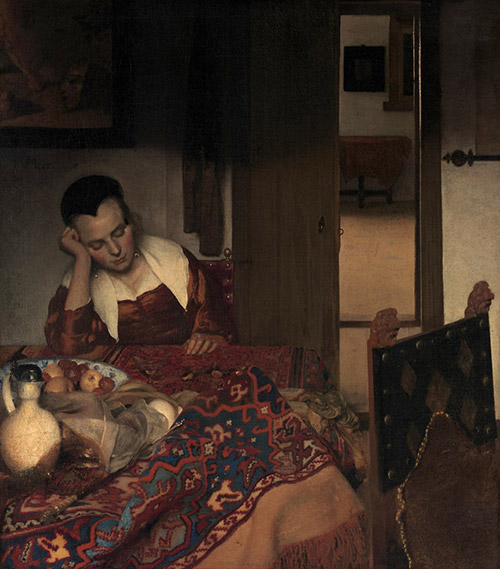



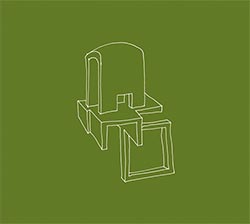

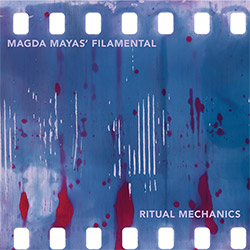

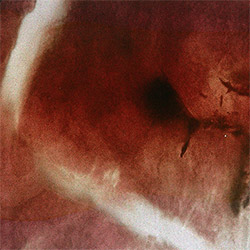


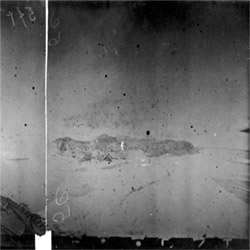
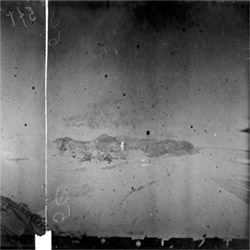
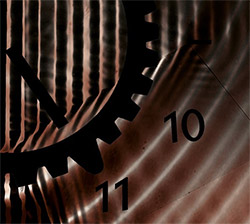
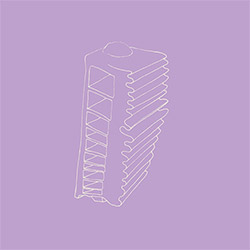
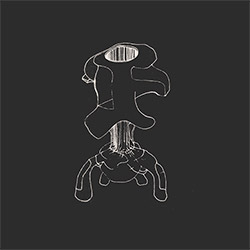


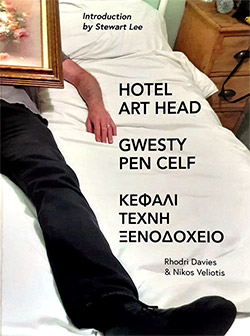
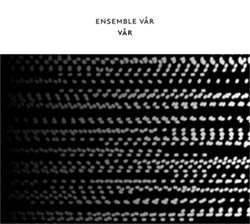

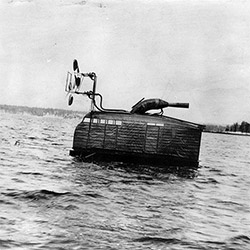

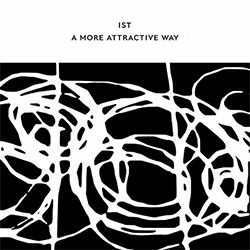
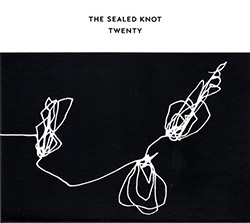
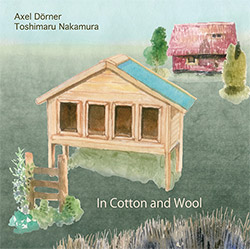
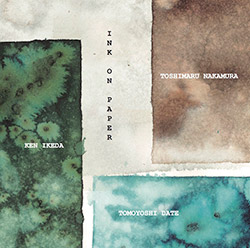

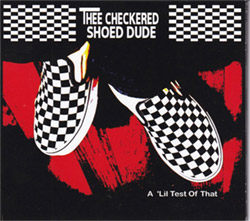


![BlueRing Improvisers: Materia [2 CDs]](https://www.teuthida.com/productImages/misc4/36513.jpg)








![Wheelhouse (Rempis / Adasiewicz / McBride): House And Home [VINYL]](https://www.teuthida.com/productImages/misc4/36462.jpg)
![+DOG+: The Light Of Our Lives [2 CDs]](https://www.teuthida.com/productImages/misc4/36009.jpg)


![Parker, Evan / Jean-Marc Foussat: Insolence [VINYL]](https://www.teuthida.com/productImages/misc4/36398.jpg)


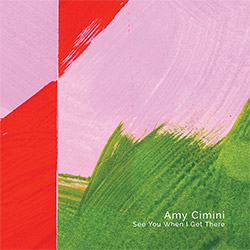





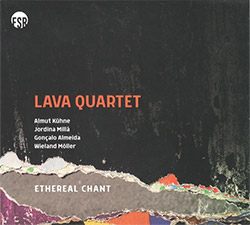
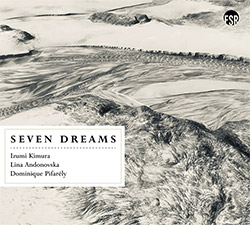
![Deupree, Jerome / Sylvie Courvoisier / Lester St. Louis / Joe Morris: Canyon [2 CDs]](https://www.teuthida.com/productImages/misc4/36404.jpg)



![Eventless Plot | Haarvol: The Subliminal Paths [CASSETTE + DOWNLOAD]](https://www.teuthida.com/productImages/misc4/36232.jpg)
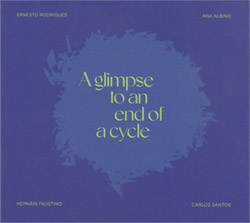


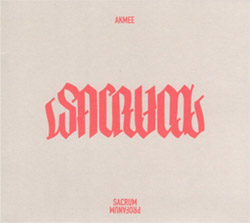


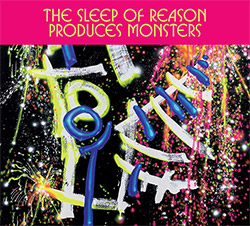



![Eventless Plot | Francesco Covarino: Methexis [CASSETTE + DOWNLOAD]](https://www.teuthida.com/productImages/misc4/36231.jpg)

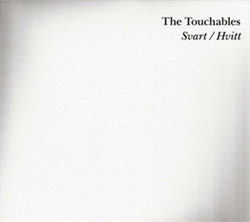

![Das B (Mazen Kerbaj / Mike Majkowski / Magda Mayas / Tony Buck): Love [VINYL]](https://www.teuthida.com/productImages/misc4/36329.jpg)
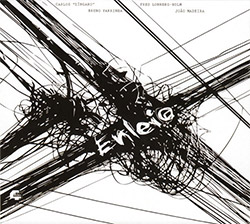

![Eternities: Rides Again [CASSETTE]](https://www.teuthida.com/productImages/misc4/36247.jpg)
![Lopez, Francisco: Untitled (2021-2022) [2 CDs]](https://www.teuthida.com/productImages/misc4/36438.jpg)


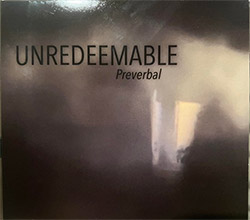
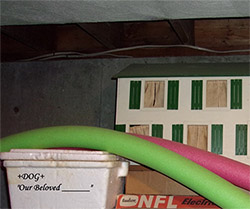
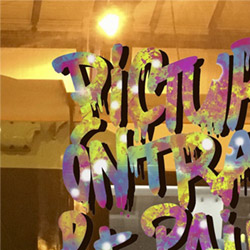

![Money : Money 2 [2 CDs]](https://www.teuthida.com/productImages/misc4/35894.jpg)
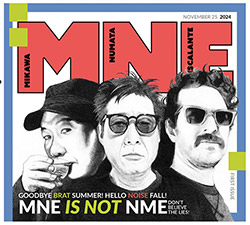
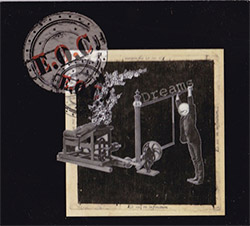


![Klinga, Erik: Elusive Shimmer [VINYL]](https://www.teuthida.com/productImages/misc4/36258.jpg)
![CHANGES TO blind (Phil Zampino): Volume 9 - I Wave on a Fine Vile Mist [CD + DOWNLOAD]](https://www.teuthida.com/productImages/misc4/36061.jpg)

![Wallmart / Rubbish: Asset Protection [split CD]](https://www.teuthida.com/productImages/misc4/35900.jpg)


![+Dog+: The Family Music Book Vol. 5 [2 CDs]](https://www.teuthida.com/productImages/misc4/35897.jpg)
![Kuvveti, Deli : Kuslar Soyledi [CASSETTE w/ DOWNLOAD]](https://www.teuthida.com/productImages/misc4/36107.jpg)
![Brown, Dan / Dan Reynolds: Live At The Grange Hall [unauthorized][CASSETTE]](https://www.teuthida.com/productImages/misc4/36245.jpg)



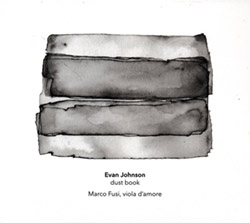


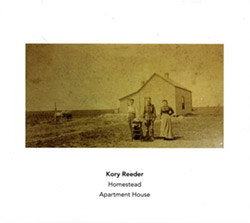
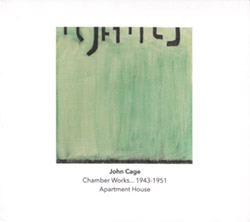
![Palestine, Charlemagne / Seppe Gebruers: Beyondddddd The Notessssss [VINYL]](https://www.teuthida.com/productImages/misc4/36206.jpg)
![Palestine, Charlemagne / Seppe Gebruers: Beyondddddd The Notessssss [NEON GREEN VINYL]](https://www.teuthida.com/productImages/misc4/36207.jpg)

![Laubrock, Ingrid: Purposing The Air [2 CDs]](https://www.teuthida.com/productImages/misc4/35639.jpg)
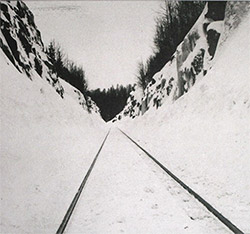
![Yoko, Ono / The Great Learning Orchestra: Selected Recordings From Grapefruit [2 CDs]](https://www.teuthida.com/productImages/misc4/35841.jpg)









![Zorn, John / JACK Quartet: The Complete String Quartets [2 CDs]](https://www.teuthida.com/productImages/misc4/35609.jpg)

![Lonsdale, Eden: Dawnings [2 CDs]](https://www.teuthida.com/productImages/misc4/35480.jpg)



![Sorry For Laughing (G. Whitlow / M. Bates / Dave-Id / E. Ka-Spel): Rain Flowers [2 CDS]](https://www.teuthida.com/productImages/misc4/35985.jpg)

![Rolando, Tommaso / Andy Moor : Biscotti [CASSETTE w/ DOWNLOADS]](https://www.teuthida.com/productImages/misc4/36106.jpg)


![Electric Bird Noise / Derek Roddy: 8-10-22 [CD EP]](https://www.teuthida.com/productImages/misc4/35970.jpg)








![Elephant9 : Mythical River [VINYL]](https://www.teuthida.com/productImages/misc4/34624.jpg)



![Elephant9 with Terje Rypdal: Catching Fire [VINYL 2 LPs]](https://www.teuthida.com/productImages/misc4/35355.jpg)
![Deerlady (Obomsawin, Mali / Magdalena Abrego): Greatest Hits [VINYL]](https://www.teuthida.com/productImages/misc4/34876.jpg)







![Surplus 1980: Illusion of Consistency [CD]](https://www.teuthida.com/productImages/misc4/35069.jpg)
![Staiano, Moe: Away Towards the Light [VINYL + DOWNLOAD]](https://www.teuthida.com/productImages/misc4/35037.jpg)
![Coley, Byron: Dating Tips for Touring Bands [VINYL]](https://www.teuthida.com/productImages/misc4/17906.jpg)

![Lost Kisses: My Life is Sad & Funny [DVD]](https://www.teuthida.com/productImages/misc4/lostKissesDVD.jpg)